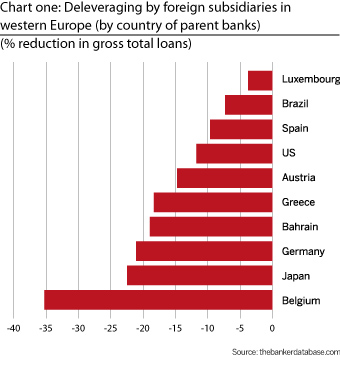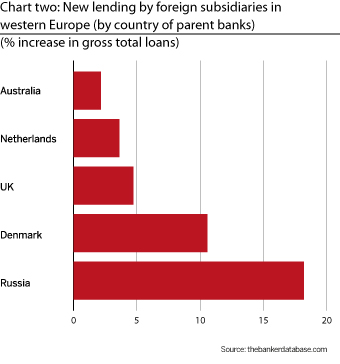Deleveraging has been the dominant word in European banking over the past year, as higher capital requirements, tough funding conditions and poor asset quality force banks to shrink. One of the trends alarming observers has been the tendency of banks to focus on their home markets, cutting cross-border credit lines in countries where they used to be active. A survey by professional services firm Deloitte in October 2012 concluded that the process of deleveraging was “reversing the single market” for lending in Europe.
Among banking sectors that had more than $5bn in outstanding loans to other western European economies, it comes as no surprise that Belgian banks have staged the largest retreat. This is mainly due to the rescue and break-up of Dexia, which is winding down loan books and divesting subsidiaries outside Belgium to focus on its core activities.
The reduction in cross-border lending by banks in the most troubled markets such as Greece and Spain is also predictable. In Germany, the restructuring of Commerzbank, the second largest private sector bank, plus the regional landesbanken, has caused a steep drop-off in cross-border lending.
But perhaps more worrying is the scale of cutbacks by non-European banks that are relatively flush with liquidity. Japanese banks were particularly aggressive in reducing their lending exposure, while US banks were not far behind. However, there are signs of improvement in 2012, with Japan’s top three banks becoming more active in
European corporate lending, and a push into western Europe by some of the largest US banks such as Wells Fargo.
Few banks increased their cross-border lending in 2011, but those in non-eurozone countries such as Denmark and the UK, where the liquidity squeeze was much less severe, have stepped into the breach to some extent. Perhaps most striking is the 33% growth of lending by Russia’s second largest bank VTB. This came despite (or perhaps thanks to) its $14.4bn bail-out by the Russian government to cover unexpected loan losses at its new acquisition, Bank of Moscow.








